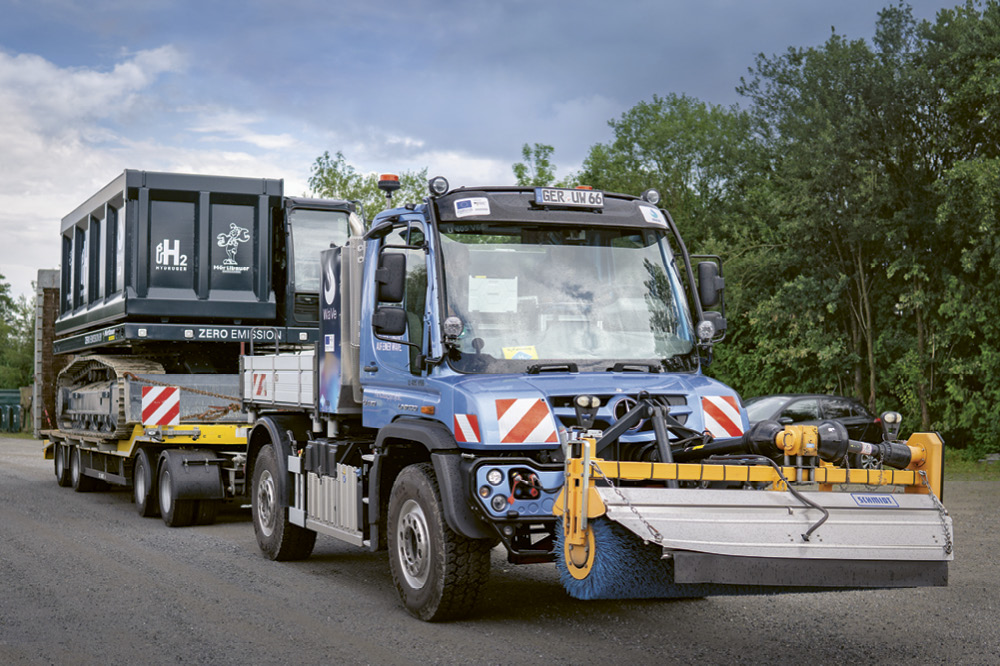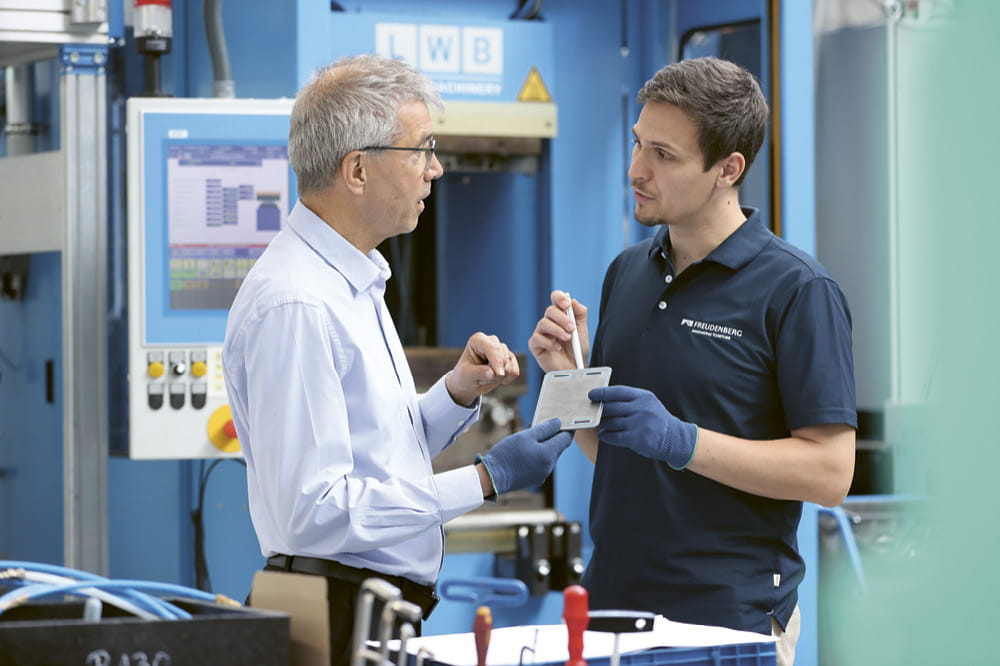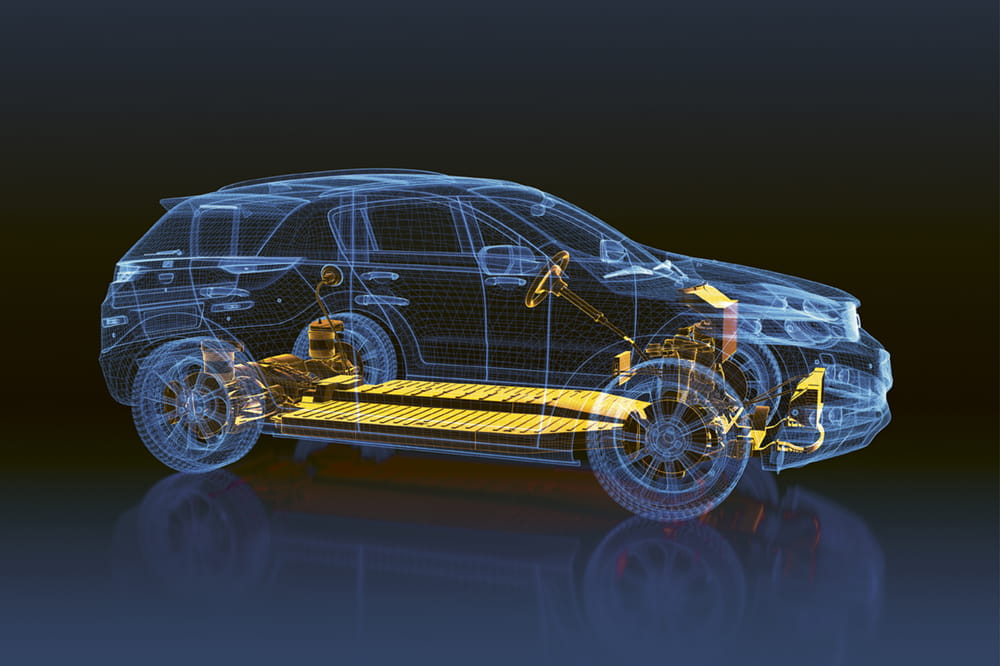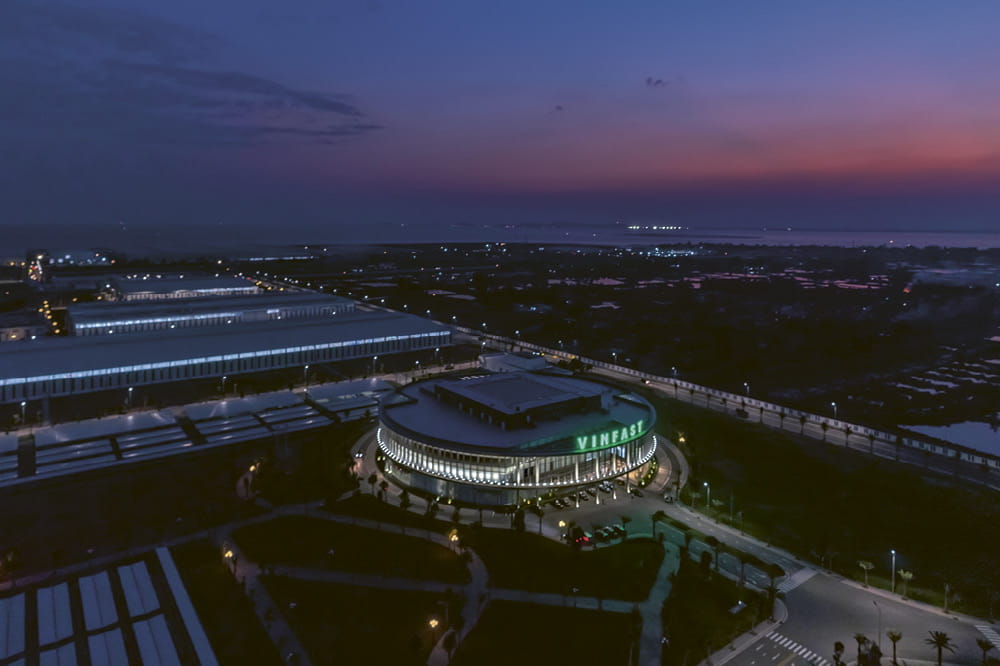Obtain news and background information about sealing technology, get in touch with innovative products – subscribe to the free e-mail newsletter.

Motor Scooters: Southeast Asia’s Top Choice for Transport
Anyone staying in a Southeast Asian city is quickly struck by the different kind of traffic on the streets: Motor scooters are everywhere. That’s not expected to change with electrification either.
To many, the memory of an extraordinary feat is still vivid: It was the opening ceremony of the Olympic Summer Games in London in 2012 when a stand-in for the Queen jumped from a helicopter with a parachute. Six years later, Indonesian President Joko Widodo followed suit at the opening ceremony of the 18th Asian Games. Only his double did not float through the air into a stadium – he roared through the streets and alleyways of Jakarta on a high-performance motorcycle. The politician’s relationship with motorized two-wheelers was no fabrication. Four months earlier, Widodo had taken a motorcycle trip with two cabinet ministers and a few other companions. The media came along for the ride.
Three Motorbikes for Every Car
Widodo is a symbol of his countrymen’s close ties to motorcycles, motorbikes and motor scooters. The statistical portal of the Association of Southeast Asian Nations (ASEAN) puts the number of registered, motorized two-wheelers in Indonesia at nearly 118 million in 2021. The indisputable conclusion is that one out of every two inhabitants of the region’s most populous country owns a motorized two-wheeler. By contrast, only a little more than 22 million cars are registered in the country. The predominance of two-wheelers can be seen in most Southeast Asian nations. Cars are only in the majority in the tiny Sultanate of Brunei Darussalam, the city-state of Singapore and in Malaysia, where they hold the thinnest of edges. At the beginning of this decade, consolidated data from all the ASEAN nations showed more than 240 million motorized two-wheelers compared to barely 75 million cars.
The statistics come to life in the cityscapes of metropolises like Jakarta, Hanoi, Manila, Bangkok and Kuala Lumpur. Motor scooters, in particular, snake their way through dense city traffic. These small, agile vehicles make quicker progress than the mass of traffic and can even take shortcuts through alleys. Finding a parking spot is easier as well. Moreover, the average income in many ASEAN nations is still comparatively low. The bulk of the population cannot afford to buy and maintain a car. That’s not the case for the less expensive motor scooters. They are considered a sturdy everyday vehicle in Southeast Asia, and not a toy for recreational use. People use them to haul shopping purchases, family members and much more in the countryside as well as the cities. So, it comes as no surprise that more than 85 percent of all households in Thailand, Vietnam and Indonesia own at least one motorized two-wheeler.
Shock Absorber Seal
When it comes to motorcycles, motorbikes and motorized scooters, a good shock absorber seal at the front wheel is crucial for safety and comfort. The less friction caused by the seal, the more the bike’s full road contact is assured. This applies even to riding on irregular or stony terrain. Freudenberg Sealing Technologies uses a high-tech elastomer that it developed in-house for its low-friction seals. Not only does it withstand tremendously high stresses – it is long-lasting, weatherproof and resistant to ozone. The seal’s low-friction design can be adapted to customer specifications and has already proven itself millions of times over in the Indian two-wheeler market.
Diameters up to 54 millimeters
Mileage up to 50,000 kilometers (31,000 miles)
Greater Wealth Builds Hope for the Auto Industry
The region’s economic upswing will likely lead to greater prosperity and a growing middle-class. That’s why a study by the Japanese consultancy, Abeam Consulting, Ltd., assumes that various Southeast Asian countries will move away from two-wheelers to automobiles. In the authors’ view, this already applies to Thailand, as the gap between the number of motorized two-wheelers and cars continues to close. Indonesia and Vietnam will follow suit, the study says. The prospects for automobiles will improve as prices become more affordable, and the local auto industry grows.
But it should not be assumed that motorcycles, motorbikes and motor scooters, in particular, will become less important to the region. Various experts say electrification is on its way and will take hold in two-wheelers first, and automobiles will follow. The smaller vehicles are still practical in city traffic, and their prices and maintenance costs are lower than those for cars. Based on modeling in 2022, the consulting firm, McKinsey, came to the conclusion that about 36 percent of all motorized two-wheelers in Southeast Asia could be electrified by 2030. It is an optimistic outlook, even if two popular taxi and delivery services, Grab and Gojek, have announced their plans to electrify their fleets over the next few years. They are made up of motor scooters to a great extent.
A Key Factor: Battery Exchanges
Batteries are an important factor for the wide-ranging success of motorized two-wheelers. In 2021, several international vehicle manufacturers came together in a consortium to develop a standardized battery exchange system. As soon as a battery runs low on energy, it would be swapped manually and relatively easily for another. Honda recently introduced its electric scooter EM1 e. The model already has an exchange battery and should be available in Japan before year’s end, although it is explicitly aimed at the Indonesian market. Indonesian President Widodo seems to be ready for the next generation of vehicles. At the Indonesia International Motor Show 2023, he was one of the first visitors to climb onto an EM1 e. Like other well-known manufacturers, Honda has announced that it will soon bring out high-performance electric motorcycles. That means Widodo’s stand-in could soon be filmed cruising Jakarta’s streets and alleyways on an electric motorcycle.
This article originally appeared in ESSENTIAL, Freudenberg Sealing Technologies’ corporate magazine that covers trends, industries and new ideas. To read more stories like this, click here.
More Stories About E-Mobility

Join Us!
Experience Freudenberg Sealing Technologies, its products and service offerings in text and videos, network with colleagues and stakeholders, and make valuable business contacts.
Connect on LinkedIn! open_in_new












